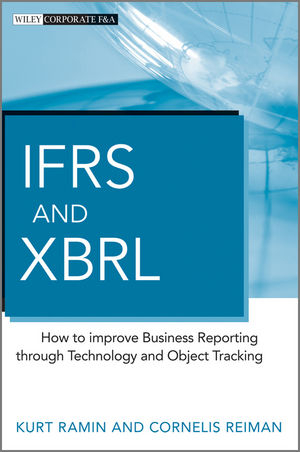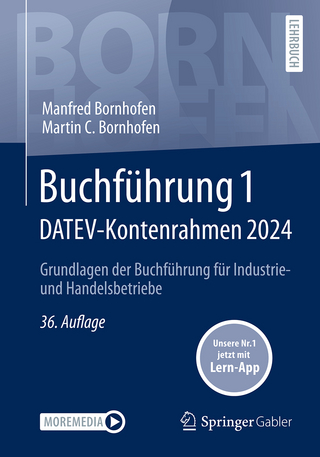
IFRS and XBRL
John Wiley & Sons Inc (Verlag)
978-1-118-36973-9 (ISBN)
- Titel ist leider vergriffen;
keine Neuauflage - Artikel merken
provides valuable commentary on key components of IFRS which are crucial to local, national and international business decision making
demonstrates the importance of disclosure checklists
offers illustrative financial statements arising from IFRS
looks at recent developments in IFRS, in particular how the standards should be reflected in the narrative report, and what implications they have for sustainability reporting
explores how business reporting can be improved, for example through the addition of non-financial reporting
examines the key issue of emerging technology in reporting under IFRS, especially the use of XBRL and the obvious push for a new paradigm whereby object definitions, tracking and valuation offer considerable benefits to the people who produce and rely upon business reports
To complete the picture, the authors examines other standards, and cover important issues such as US GAAP convergence with IFRS, and the important of International Valuation Standards, IFRS and XBRL is the complete guide to the background, current state, and future of International Financial Reporting Standards.
Kurt Ramin (Dubai, UAE), until recently served as Director and Advisor at AccountAbility and the IFRS Foundation, both located in London. His work at the IFRS Foundation and the IASB involved introducing IFRS and XBRL to more than 80 countries. During his tenure with the IFRS Foundation he lead XBRL International as Global Chairman and was a member of the European Union Commission's High Level Expert Group on Intangibles. From 2008 to 2012 he was Treasurer for the International Union for Conservation of Nature (IUCN), the world's largest association of nature conservation agencies, headquartered in Switzerland. Prior to joining the IFRS Foundation (and its predecessor, the IASC Foundation) he was a Global Capital Markets Group Partner at PricewaterhouseCoopers in New York and Chief Financial Officer at several international companies. Cornelis Reiman (Bangkok, Thailand), is an international board advisor. Previously, he was President of an economic development entity promoting International Financial Reporting Standards in developing countries. Before that, he was Dean and Vice President of universities in Thailand and Singapore. Prior to academia, he consulted in the private, public and not-for-profit sectors on corporate management and strategic planning. The global IT provider IBM, and the former accounting services firm of Arthur Andersen & Co., employed him earlier. Cornelis has a Ph.D. in Economics and enjoys exceptional professional qualifications, including FCPA (Australia and Singapore), FCIS, Chartered Accountant, and Senior Member with the Australian Computer Society. Presently, he is an Independent Director on the board of the Chamber of Accountants of the Republic of Kazakhstan. In addition, he advises CPA Russia.
Foreword xi About the book xiii
About the authors xv
Preface xix
Acknowledgements xxi
Introduction to this book 1
Leading to a new reporting paradigm – concept map 2
PART I: INTERNATIONAL FINANCIAL REPORTING STANDARDS (IFRS)
Tips for readers 13
Chapter 1: Introduction to and objectives of IFRS 15
Chapter 2: How important are IFRS to business and global acceptance? 19
2.1 IFRS and legal objectives 20
2.2 Convergence of IFRS and US GAAP 21
2.3 Reconciliation to US GAAP 24
2.4 IOSCO, regulators and enforcement 25
Chapter 3: Governance and accountability of the IFRS Foundation 29 3.1 History, structure and finance 29
3.2 The monitoring board and IFRS Foundation trustees 39
3.3 IASB members, due process and IFRS Interpretations Committee 42
3.4 IFRS Advisory Council 48
Chapter 4: Framework, standards and interpretations of IFRS 51
4.1 Framework 52
4.2 International Financial Reporting Standards 58
4.3 IFRS for Small and Medium-sized Enterprises versus Private companies 159
4.4 Interpretations to Standards 162
Chapter 5: IFRS Practice Statement Management Commentary 165
Chapter 6: Future plans 169
Chapter 7: New presentation formats 171
7.1 Model financial statements 171
7.2 New financial statement presentation 174
Chapter 8: Contents of IFRS book 177
Chapter 9: Glossary for IFRS 181
Chapter 10: Index to IFRS book 183
PART II: IFRS DISCLOSURES, OTHER REPORTING STANDARDS AND ASSURANCE
Tips for readers 187
Chapter 1: IFRS disclosure 189
1.1 Summary of disclosures 192
1.2 Disclosure checklists 193
1.3 IFRS disclosure examples 206
Chapter 2: Other reporting standards 223
2.1 International Public Sector Accounting Standards (IPSAS) 224
2.2 Statistics-based standards 311
2.3 International Valuation Standards Council (IVSC) 321
2.4 Valuation Resource Group 328
2.5 IEEE 328
2.6 ISO 330
2.7 AccountAbility 335
2.8 Other standards 346
2.9 OneReport 354
2.10 Taxation 354
PART III: XBRL – USING TECHNOLOGY TO IMPLEMENT STANDARDS
Tips for readers 359
Chapter 1: XBRL 361
1.1 XML – the technical basis of XBRL 364
1.2 Benefi ts of XBRL 367
1.3 Users of XBRL – worldwide 372
Chapter 2: XBRL and IFRS 373
2.1 Overview 375
2.2 The IFRS taxonomy 381
2.3 IFRS Foundation and translation 389
2.4 Support materials 401
2.5 Future steps 437
Chapter 3: Organising and collecting data 443
3.1 FASB codification and XBRL taxonomy 443
3.2 Illustrative financial statements 449
3.3 XBRL for integrated reporting 458
3.4 Content analysis 469
Chapter 4: Using systems to organise and collect data 473
4.1 ERP systems and spreadsheets 473
4.2 SAP, Oracle and Cloud 475
Chapter 5: Opportunities to integrate and track data objects 481
5.1 Growing interest among stakeholders 481
PART IV: TRACKING OBJECTS – A PARADIGM SHIFT IN BUSINESS REPORTING
Tips for readers 489
Chapter 1: Introduction 491
Chapter 2: Developments in new reporting models 495
Chapter 3: Recognition and de-recognition 499
Chapter 4: Discussing measurement 501
Chapter 5: A comprehensive business reporting model 505
Chapter 6: Future reporting: the object and value supply chain 507
Chapter 7: Integrated reporting 525
7.1 Integrated reporting 526
7.2 Landscape of integrated reporting 535
Chapter 8: Object tracking 541
8.1 Object recognition 541
8.2 Data management 542
8.3 Tagging 542
8.4 Tracking 543
PART V: THE NEED FOR INCREASED ACCEPTANCE OF IFRS
Tips for readers 545
Preamble 546
Chapter 1: The need for increased acceptance of IFRS 549
1.1 National accounting standards versus IFRS 549
1.2 Partial acceptance of IFRS 550
Chapter 2: The need for increased acceptance of XBRL 551
Chapter 3: Additional issues 553
Chapter 4: Conclusion 561
Acronyms 563
References 571
Appendix A: IFRS example – for familiarisation 583
Appendix B: SNA 2008 – Contents 617
Glossary of IFRS terms 665
Index 715
| Erscheint lt. Verlag | 1.4.2013 |
|---|---|
| Reihe/Serie | Wiley Corporate F&A |
| Verlagsort | New York |
| Sprache | englisch |
| Maße | 160 x 236 mm |
| Gewicht | 1198 g |
| Themenwelt | Wirtschaft ► Betriebswirtschaft / Management ► Rechnungswesen / Bilanzen |
| ISBN-10 | 1-118-36973-4 / 1118369734 |
| ISBN-13 | 978-1-118-36973-9 / 9781118369739 |
| Zustand | Neuware |
| Haben Sie eine Frage zum Produkt? |
aus dem Bereich


